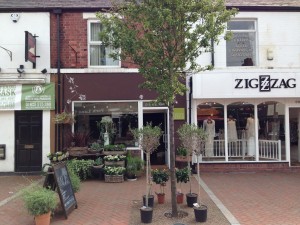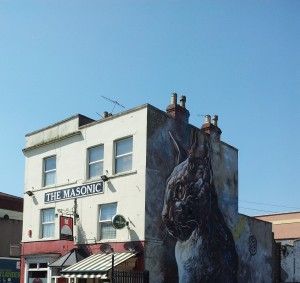During August, I was part of the Academy of Urbanism Great Street Award assessment group. As always these events prompt interesting discussions between assessors about how a place becomes successful and stays that way. A critical part of the Awards’ process is to identify the learning points that are transferable to other places. This week we see the debate on how we reinvent our high streets enter a new chapter as Bill Grimsey launches his views and Mary Portas responds. This got me thinking about some of the learning points I took away from this year’s Great Street Awards and which serve to illustrate that there is no single answer to reviving high streets. So here is a quick resume of my take on three very different approaches.
Lambs Conduit Street (see my blog A Little Street of Destination Shops) sustains its success because a significant proportion of the properties in this street are owned by one estate that chooses tenants on the basis they are likely to stay in the premises long-term, to contribute to the creative business community and to help sustain a lively destination during the day and in the evenings.
Poynton recognised it was no coincidence that it has the busiest junction in Cheshire and one of the worst performing retail centres. The town has introduced a shared-space traffic calming scheme which means pedestrians and vehicles now have equal priority and the streetscape has been redesigned to achieve that. The high quality design of the scheme has transformed the town’s public realm. The scheme has removed all traffic lights and traffic light controlled pedestrian crossings and people have to interact with each other at a street level instead of using coloured lights above their heads to dictate their movement. As a result traffic speeds have slowed to 15-20 miles an hour but the traffic keeps moving and pollution levels have dropped significantly. There has been a decline in vacant units in the main shopping street and independent businesses are now using the open spaces in front of their premises to display goods and begin to develop a café culture. Local traders have formed a business forum to optimise the opportunities of their ‘new’ sense of place.
The Bedminster area of Bristol (North St, West St, East St) is publicised as one of the more successful of the Portas Pilots measured by a reduction in vacant units. The scheme has certainly helped strengthen existing local community partnerships as well as delivering some great street art projects. Then Bedminster thought ‘what if we had £100,000 to spend every year, instead of just the once’ and that has helped spur them on to evolve their Town Team into a BID. The BID vote in April 2013 was overwhelmingly positive with 84% voting ‘Yes’ enabling a minimum of £80,000 per annum for projects over the next five years.
These three areas are all using different approaches and tools to create thriving streets but whether the intervention is top down or grassroots what all these streets share is active business communities that work together effectively. No number of initiatives or theories on high street regeneration will work without recognising that successful places are about people AND place.

